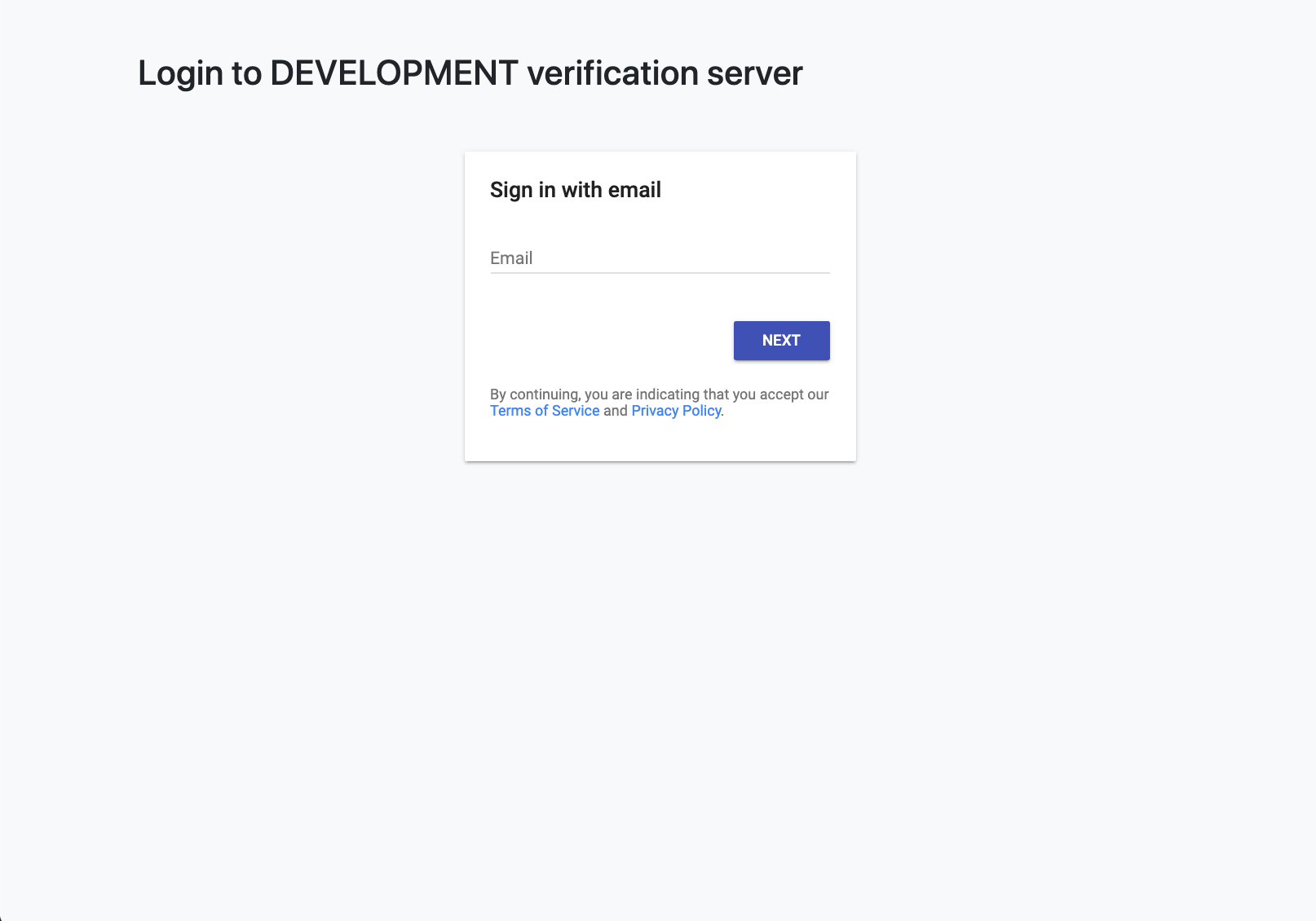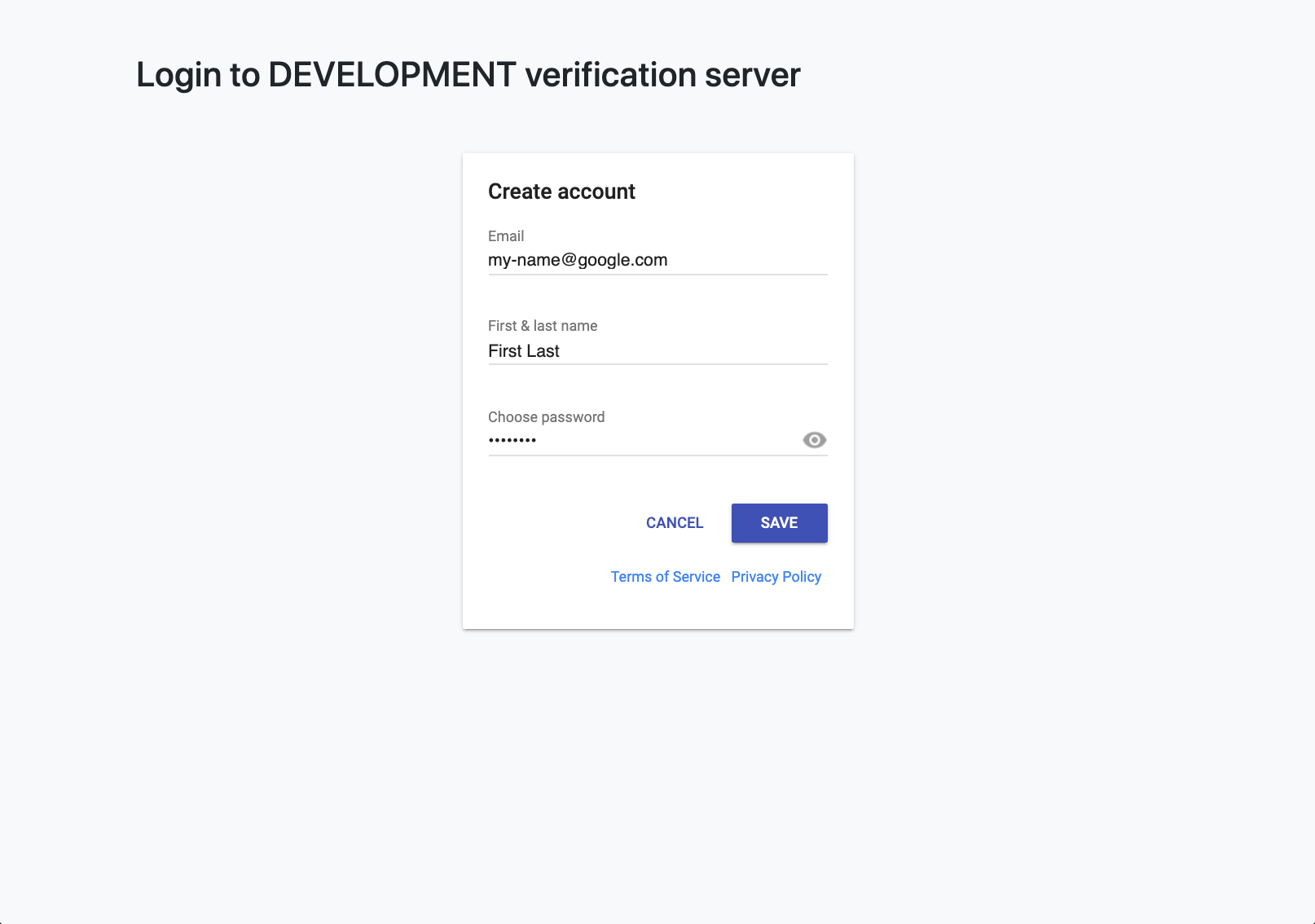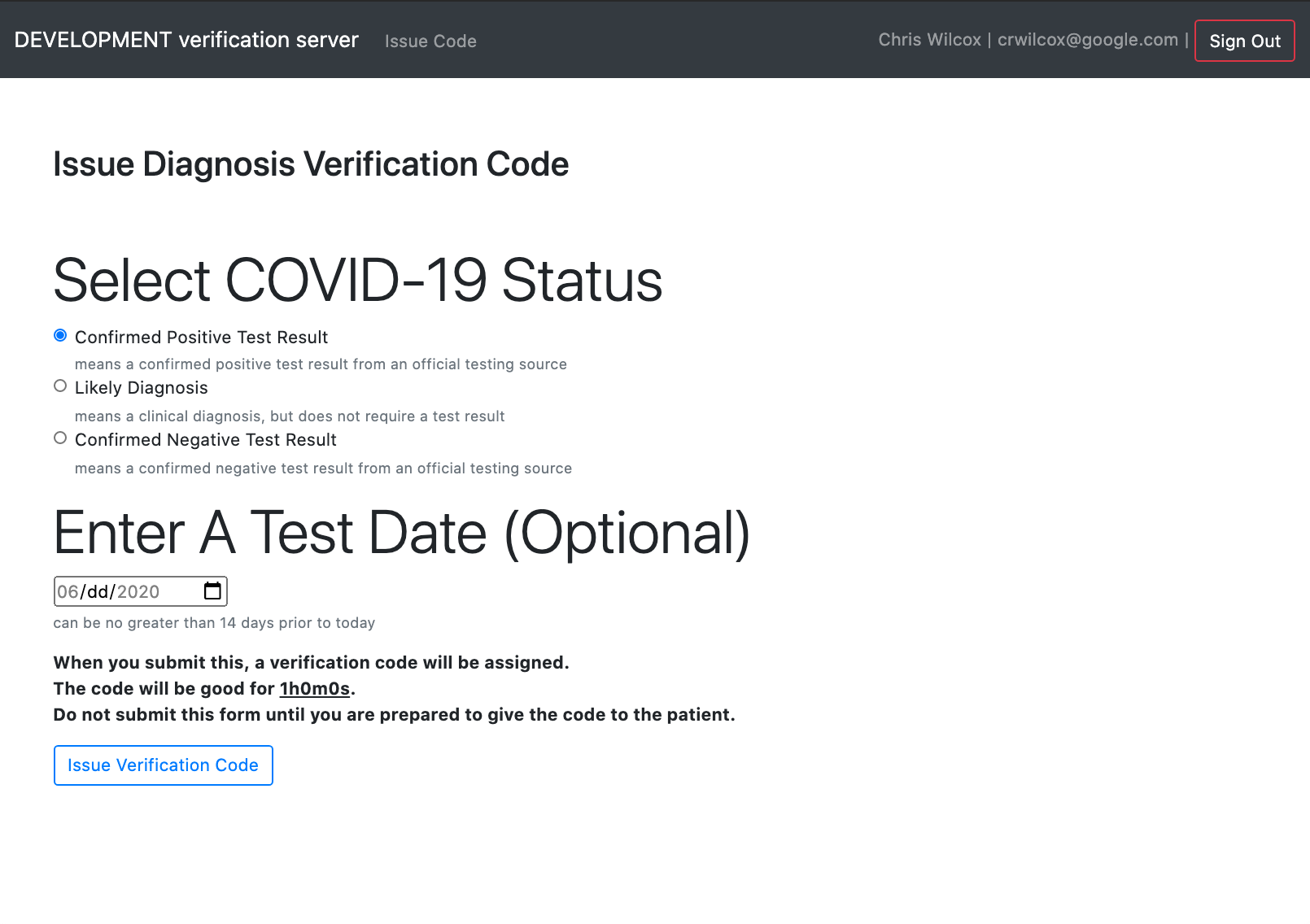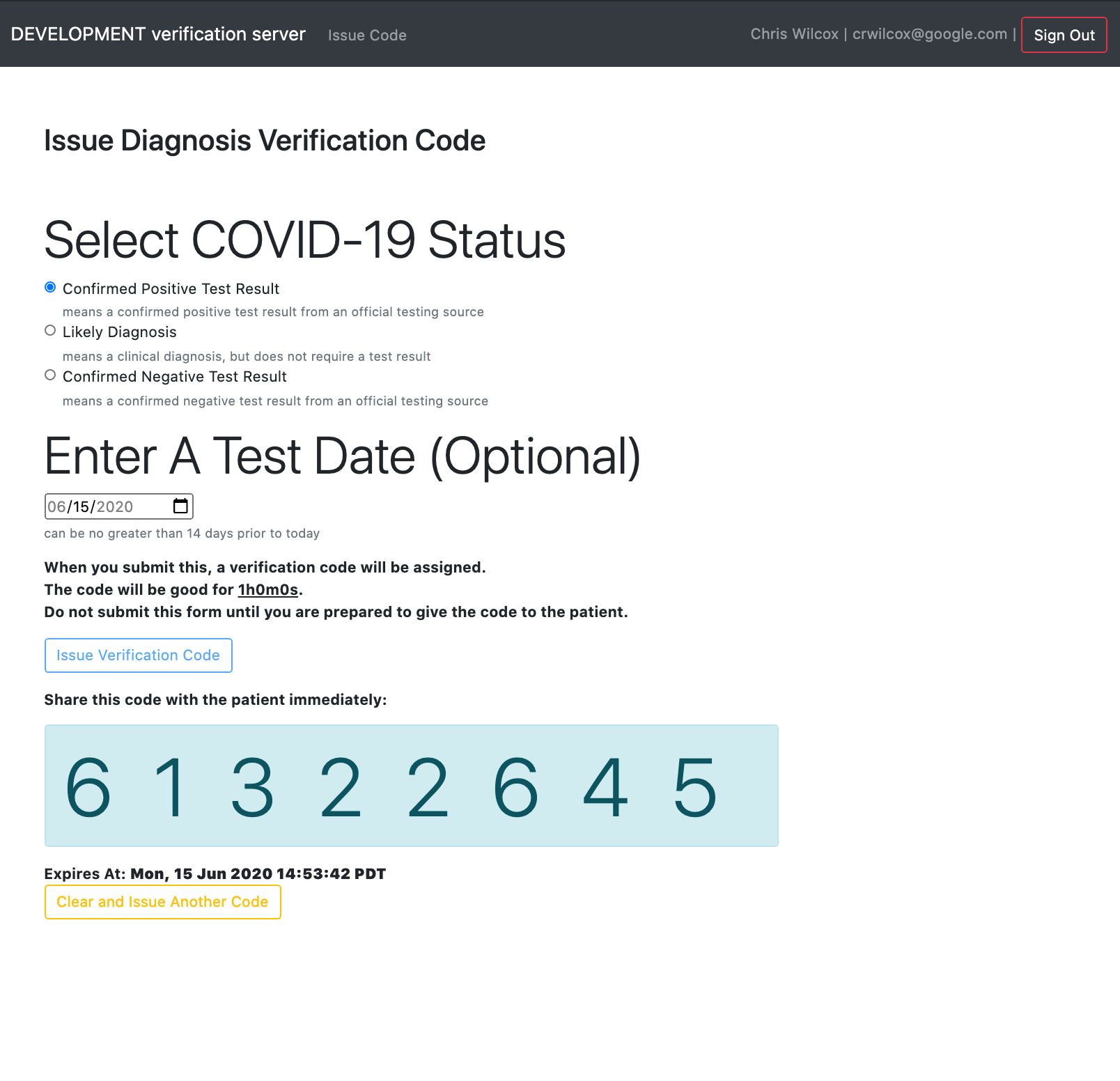As part of the broader Google Exposure Notification reference server efforts, this repository contains the reference implementation for a verification server.
Following the high level flow for the verification system, this server:
- Handles human user authorization using Firebase Authentication
- Provides a Web interface for a case investigation epidemiologist (epi) to
enter test parameters (status + test date) and issue a verification code
- Verification codes are 8 numeric digits so that they can be easily read over a phone call or send via SMS text message.
- Verification codes are valid for a short duration (1 hour)
- Provides a JSON-over-HTTP API for exchanging the verification code for
a verification token.
- Verification tokens are signed JWTs that are valid for 24 hours (configurable)
- Provides a JSON-over-HTTP API for exchanging the verification token for a
verification certificate. This API call also requires an HMAC
of the Temporary Exposure Key (TEK) data+metatata. This HMAC value is
signed by the verification server to be later accepted by an exposure
notifications server. This same TEK data used to generate the HMAC here, must
be passed to the exposure notifications server, otherwise the request will
be rejected.
- Please see the documentation for the HMAC Calculation
- The Verification Certificate is also a JWT
Architecture details
- Single server (located in
cmd/server) that provides all functionality- The server is stateless and suitable for autoscaled serverless container environments.
- PostgreSQL database for shared state
- This codebase utilizes GORM, so it is possible to easily switch to another supported SQL database.
- Relies on Firebase Authentication for handling of identity / login
- As is, this project is configured to use username/password based login, but can easily be configured to use any firebase supported identity provider.
gcloud auth login && gcloud auth application-default loginCreate a key ring and two signing keys
gcloud kms keyrings create --location=us signing
gcloud kms keys create token-signing --location=us --keyring=signing --purpose=asymmetric-signing --default-algorithm=ec-sign-p256-sha256
gcloud kms keys create certificate-signing --location=us --keyring=signing --purpose=asymmetric-signing --default-algorithm=ec-sign-p256-sha256To get the resource name(s)
gcloud kms keys describe token-signing --keyring=signing --location=us
gcloud kms keys describe certificate-signing --keyring=signing --location=usFinish setup and run the server.
gcloud auth login && gcloud auth application-default login
# In case you have this set, unset it to rely on gcloud.
unset GOOGLE_APPLICATION_CREDENTIALS
# Initialize Dev Settings
eval $(./scripts/dev init)
./scripts/dev dbstart
# Configure These settings to your firebase application
export FIREBASE_API_KEY="YOUR API KEY"
export FIREBASE_PROJECT_ID="YOUR-PROJECT-123456"
export FIREBASE_MESSAGE_SENDER_ID="789123456"
export FIREBASE_APP_ID="1:123456:web:abcd1234"
export FIREBASE_MEASUREMENT_ID="G-J12345C"
export FIREBASE_AUTH_DOMAIN="${FIREBASE_PROJECT_ID}.firebaseapp.com"
export FIREBASE_DATABASE_URL="https://${FIREBASE_PROJECT_ID}.firebaseio.com"
export FIREBASE_STORAGE_BUCKET="${FIREBASE_PROJECT_ID}.appspot.com"
export TOKEN_SIGNING_KEY="<Token Key Resource ID from Above>"
export CERTIFICATE_SIGNING_KEY="<Certificate Key Resource ID from Above>"
# D/L SA from Firebase https://console.firebase.google.com/project/project-name-123456/settings/serviceaccounts/adminsdk
export GOOGLE_APPLICATION_CREDENTIALS=/Users/USERNAME/Documents/project-name-123456-firebase-adminsdk-ab3-4cde56f78g.json
# Configure CSRF_AUTH_KEY. This is a 32 byte string base64 encoded.
export CSRF_AUTH_KEY=aGVsbG9oZWxsb2hlbGxvaGVsbG9oZWxsb2hlbGxvaGk=
export DEV_MODE=1
# Migrate DB
./scripts/dev dbmigrate
# create a user for whatever email address you want to use
go run ./cmd/add-users --email YOUR-NAME@DOMAIN.com --name "First Last" --admin true
go run ./cmd/serverFrom the UI, you can issue and API KEY for making API requests.
There are two tools for testing the end to end flow.
go run ./cmd/get-tokento exchange the verification code for a verification token.go run ./cmd/get-certificateto exchange the verification token for a verification certificate.



